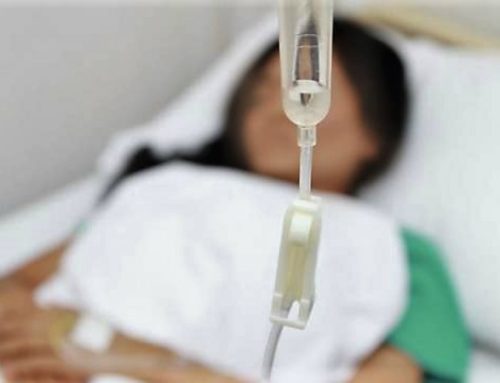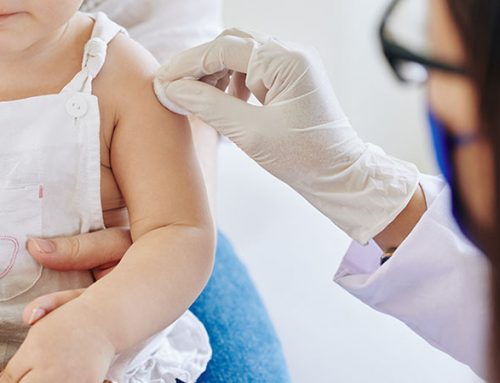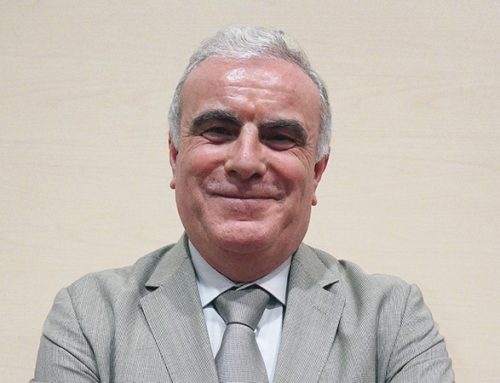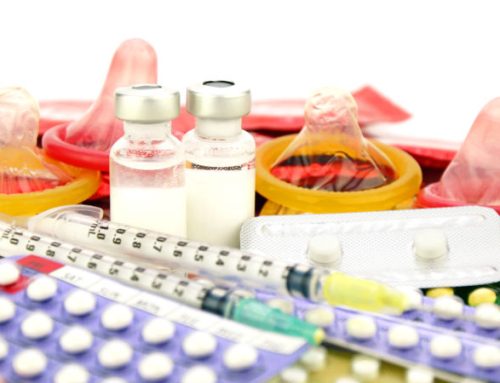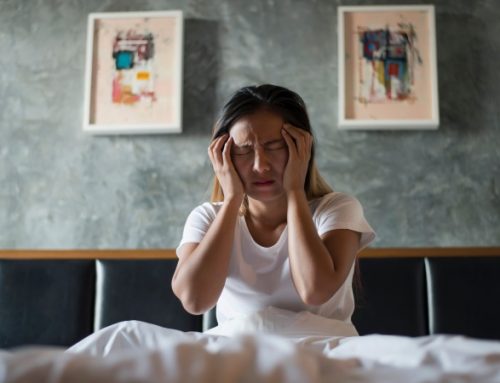ADHD in Girls: Symptoms, Diagnosis, and Treatment
Attention deficient hyperactive disorder is a neurodevelopmental disorder that affects […]
Attention deficient hyperactive disorder is a neurodevelopmental disorder that affects millions of children worldwide and often continues into adulthood. The three main types of attention deficient hyperactive disorder are hyperactive-impulsive, inattentive, and a combination.
The Centers for Disease Control and Prevention (CDC) estimate that 11 percent of 4-17-year olds in the United States have attention deficient hyperactive disorder (ADHD).
The CDC also estimate that in the U.S., boys are almost 3 times more likely to be diagnosed with ADHD than girls are. This has led to the mistaken belief among many parents, caregivers, and teachers that ADHD is a “boys’ disorder” that rarely occurs in girls.
The Child Mind Institute claim that girls may remain undiagnosed because their symptoms are different to boys and do not tick the more obvious signs and symptoms boxes.
Contents of this article:
Signs and symptoms of ADHD in girls
How do girls with ADHD differ from boys?
Treatments for girls
Signs and symptoms of ADHD in girls
The main signs and symptoms of ADHD can apply to both boys and girls, but the following symptoms are particularly associated with girls:
Inattention: Girls with ADHD may find it hard to concentrate. They may be unable to focus for long enough to complete a task at home or at school. However, if they find something interesting, they may be completely absorbed by it.
Distractibility: Girls with ADHD may be easily distracted by what is happening outside, or by their own thoughts.
Hyperactivity: Although some girls are excessively active and fidgety, like boys, others are quieter in their movements. They may fidget, shuffle in their chairs, or doodle.
Impulsivity: Girls may be overemotional, and this may leave them unable to slow down or to think about what they say. It can be hard for them to know what is and is not socially appropriate, and this can lead to difficulties in making and keeping friends.
Executive malfunctions: Organizational skills may pose a challenge. Girls with ADHD may have poor time management skills, and they may find it hard to follow multi-step directions or complete a task. They may often lose item
How symptoms can change over time
Girls with ADHD who are not diagnosed with the disorder until adulthood are at risk of developing other conditions. They are also more likely to face one or more of the following challenges:
Low self-esteem
Coping strategies driven by unregulated emotion instead of problem-solving logic
A tendency to attribute success and difficulties to external factors such as luck or chance instead of seeing their own actions as responsible
High levels of stress
Anxiety disorder
Depression
Possible complications if left untreated
Dr. Ellen Littman, co-author of Understanding Girls with ADHD, says if a girl with ADHD is left undiagnosed or untreated as she enters adolescence and young adulthood, she will almost inevitably encounter a “range of adjustment problems.”
This can lead to one or more additional disorders, such as depression, anxiety, or an eating disorder such as bulimia.
Women with ADHD are more likely to engage in high-risk sexual behavior and to develop substance addiction, according to Dr. Littman.
In addition, women with ADHD may experience chronic stress, and this can increase their risk of stress-related diseases such as fibromyalgia – a disorder that causes tiredness and pain in muscles.
According to Dr. Kathleen Nadeau, “Girls with untreated ADHD are at risk for chronic low self-esteem, underachievement, anxiety, depression, teen pregnancy, and early smoking during middle school and high school.”
She adds that, in adulthood, they are more likely to face, “divorce, financial crises, single-parenting a child with ADHD, never completing college, underemployment, substance abuse, eating disorders, and constant stress due to difficulty in managing the demands of daily life.”
This can lead to underachievement in various aspects of life.
Early warning signs
Early signs that a girl might have ADHD include the following:
Difficulty keeping track of school assignments and deadlines, even if the girl is making great effort to stay organized
Frequently running late, despite efforts to stay on schedule
Having trouble getting to sleep at night and getting up in the morning
Jumping from one topic of conversation to another without warning
Often interrupting people when they are talking
Inattentiveness at school and at home
Forgetting what she has just read or been told by another person
Risk factors for ADHD
A number of factors may put a child or adolescent at greater risk of developing ADHD.
These include:
Someone in their biological family having ADHD or another mental health disorder
Maternal drug use or smoking during pregnancy
Premature birth
Maternal exposure to environmental poisons during pregnancy
Environmental toxins
High consumption of refined sugars and food additives in diet
How do girls with ADHD differ from boys?children running in the park
Regular exercise and time spent outdoors may help to manage ADHD in girls.
Boys are more likely than girls to receive a diagnosis of ADHD, but this may be because the condition often presents differently in girls. The symptoms may be less obvious and they may not fit the common stereotypes associated with ADHD.
Research indicates that while most boys with ADHD tend to express their frustration physically and verbally, girls are more likely to internalize their anger and pain.
Research conducted by Dr. Stephen Hinshaw, author of The ADHD Explosion, concludes that girls with combined-type ADHD (hyperactive-impulsive and inattentive) are significantly more likely to self-harm or attempt suicide.
However, around 40 percent of girls outgrow their hyperactive and impulsive symptoms in adolescence.
When to see a specialist
If caregivers think that a girl has ADHD, they should consult a pediatrician, family practitioner, or nurse practitioner.
Some pediatricians have specialist training in behavior and development, and many have at least a special interest in the area. Other specialists include child psychiatrists, psychologists, and occupational therapists.
Other useful contacts may be found through:
Officials at the child’s school
A local parent support group
Treatments for girls
A doctor may prescribe medication, psychotherapy, or both, but caregivers can also encourage the girl to manage her ADHD in a number of ways.
These include:
Encouraging her to exercise or play a team sport
Providing regular opportunities to spend time outdoors and in nature
Learning more about nutrition and how diet affects ADHD symptoms
Encouraging rest and sleep
Establishing simple and predictable routines for meals, homework, play, and bed
Acknowledging and rewarding small achievements
Exploring professional treatment options
Reading relevant research, books, or articles
Finding suitable group behavioral therapy
Supporting time management by setting an alarm clock to time activities and deadlines
As the girl enters adolescence and becomes more independent, she will probably need support to help her regulate her own behavior.
A child looks away pensively
Bipolar and anxiety disorder may have similar symptoms to ADHD.
This may include:
Understanding and accepting her challenges instead of judging and blaming herself
Identifying the sources of stress in daily life and making changes to lower stress levels
Simplifying her schedule as much as possible
Learning to ask clearly for structure and support from family and friends
Scheduling daily “time out” for herself
Developing healthy self-care habits, such as cooking nutritious meals
Going to bed at a regular hour to ensure there is enough time to sleep
Focusing on the things she loves and prioritizing those such as a phone or important papers.
How symptoms can change over time
Girls with ADHD who are not diagnosed with the disorder until adulthood are at risk of developing other conditions. They are also more likely to face one or more of the following challenges:
Low self-esteem
Coping strategies driven by unregulated emotion instead of problem-solving logic
A tendency to attribute success and difficulties to external factors such as luck or chance instead of seeing their own actions as responsible
High levels of stress
Anxiety disorder
Depression
Possible complications if left untreated
Dr. Ellen Littman, co-author of Understanding Girls with ADHD, says if a girl with ADHD is left undiagnosed or untreated as she enters adolescence and young adulthood, she will almost inevitably encounter a “range of adjustment problems.”
This can lead to one or more additional disorders, such as depression, anxiety, or an eating disorder such as bulimia.
Women with ADHD are more likely to engage in high-risk sexual behavior and to develop substance addiction, according to Dr. Littman.
In addition, women with ADHD may experience chronic stress, and this can increase their risk of stress-related diseases such as fibromyalgia – a disorder that causes tiredness and pain in muscles.
According to Dr. Kathleen Nadeau, “Girls with untreated ADHD are at risk for chronic low self-esteem, underachievement, anxiety, depression, teen pregnancy, and early smoking during middle school and high school.”
She adds that, in adulthood, they are more likely to face, “divorce, financial crises, single-parenting a child with ADHD, never completing college, underemployment, substance abuse, eating disorders, and constant stress due to difficulty in managing the demands of daily life.”
This can lead to underachievement in various aspects of life.
Early warning signs
Early signs that a girl might have ADHD include the following:
Difficulty keeping track of school assignments and deadlines, even if the girl is making great effort to stay organized
Frequently running late, despite efforts to stay on schedule
Having trouble getting to sleep at night and getting up in the morning
Jumping from one topic of conversation to another without warning
Often interrupting people when they are talking
Inattentiveness at school and at home
Forgetting what she has just read or been told by another person
Risk factors for ADHD
A number of factors may put a child or adolescent at greater risk of developing ADHD.
These include:
Someone in their biological family having ADHD or another mental health disorder
Maternal drug use or smoking during pregnancy
Premature birth
Maternal exposure to environmental poisons during pregnancy
Environmental toxins
High consumption of refined sugars and food additives in diet
How do girls with ADHD differ from boys?children running in the park
Regular exercise and time spent outdoors may help to manage ADHD in girls.
Boys are more likely than girls to receive a diagnosis of ADHD, but this may be because the condition often presents differently in girls. The symptoms may be less obvious and they may not fit the common stereotypes associated with ADHD.
Research indicates that while most boys with ADHD tend to express their frustration physically and verbally, girls are more likely to internalize their anger and pain.
Research conducted by Dr. Stephen Hinshaw, author of The ADHD Explosion, concludes that girls with combined-type ADHD (hyperactive-impulsive and inattentive) are significantly more likely to self-harm or attempt suicide.
However, around 40 percent of girls outgrow their hyperactive and impulsive symptoms in adolescence.
When to see a specialist
If caregivers think that a girl has ADHD, they should consult a pediatrician, family practitioner, or nurse practitioner.
Some pediatricians have specialist training in behavior and development, and many have at least a special interest in the area. Other specialists include child psychiatrists, psychologists, and occupational therapists.
Other useful contacts may be found through:
Officials at the child’s school
A local parent support group
Treatments for girls
A doctor may prescribe medication, psychotherapy, or both, but caregivers can also encourage the girl to manage her ADHD in a number of ways.
These include:
Encouraging her to exercise or play a team sport
Providing regular opportunities to spend time outdoors and in nature
Learning more about nutrition and how diet affects ADHD symptoms
Encouraging rest and sleep
Establishing simple and predictable routines for meals, homework, play, and bed
Acknowledging and rewarding small achievements
Exploring professional treatment options
Reading relevant research, books, or articles
Finding suitable group behavioral therapy
Supporting time management by setting an alarm clock to time activities and deadlines
As the girl enters adolescence and becomes more independent, she will probably need support to help her regulate her own behavior.
A child looks away pensively
Bipolar and anxiety disorder may have similar symptoms to ADHD.
This may include:
Understanding and accepting her challenges instead of judging and blaming herself
Identifying the sources of stress in daily life and making changes to lower stress levels
Simplifying her schedule as much as possible
Learning to ask clearly for structure and support from family and friends
Scheduling daily “time out” for herself
Developing healthy self-care habits, such as cooking nutritious meals
Going to bed at a regular hour to ensure there is enough time to sleep
Focusing on the things she loves and prioritizing those
Other conditions with similar symptoms
ADHD can be difficult to diagnose, partly because a range of other conditions have similar symptoms.
These conditions include:
Autism or Asperger’s syndrome
Anxiety disorder
Bipolar disorder
Food allergies or sensitivity
Hearing impairments
Hypothyroidism
Iron deficiency anemia
Lead toxicity
Nutritional deficiencies
Seizure disorders
Sensory disorders
Sleep disorders
It may be necessary to rule out these conditions before diagnosing ADHD.


















